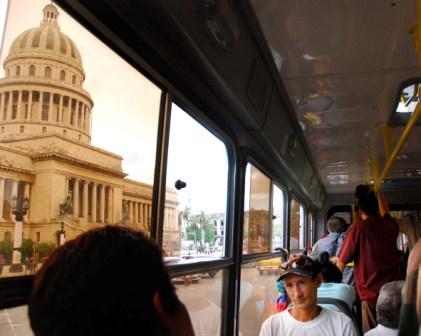Democracy Cuban Style

HAVANA TIMES, Sept. 9 – A few years ago, I participated in a debate on a European radio station in which one of the Cuban panelists spoke about the marvels of pre-revolutionary Cuba — its economic and social development, and especially its political stability.
What this speaker could never explain was why this “paradise” was the site of the first communist revolution in the Americas, which occurred through violent means and relied on massive support of the population, at least during its initial years.
Among the many issues that are discussed in relation to Cuba, the one that seems farthest from reality is that which affirms that prior to 1959 a high-level of political democracy had been reached, and that the 1940 Constitution is the best evidence of that.
The 57 years (1902-1958) before the revolution tell us a very different story.
In its first 30 years as a nominally independent nation, Cuba existed as a US protectorate with a constitutional amendment that even allowed its northern neighbor to “legally” invade the island.
Washington didn’t squander that status; it appropriated of 20 percent of the land, 90 percent of the mines and 40 percent of the sugar industry.(1) When Fidel Castro was born, two-thirds of all agricultural production in Cuba was on US-owned property.(2)
It was during those years that President Gerardo Machado decided to effectively suspend elections at that time and continue his control. He consolidated power through bloodshed and gunfire; repressing, imprisoning and murdering his opponents, while starving the majority of Cubans.
Machado failed to understand the reasons people took to the streets, as they made the nation ungovernable until they finally overthrew his dictatorship. This was perhaps the first revolution in Cuba, and undoubtedly the most spontaneous and massive.
From 1933 to 1936, Cuba had no less than eight presidents, most lasting only a few months. However the record for the shortest term was held by Carlos Manuel Marquez, who exercised his mandate for only a few hours.
Amid this chaos arose the famous 1940 Constitution, “the most advanced in the Americas,” according to its proud defenders. And possibly it was, but what’s certain is that it never played a great role in regulating the real day-to-day lives of Cubans.
This splendid Constitution could not prevent President Ramon Grau from cutting deals with rings of gangsters that had ravaged the country; he even integrated them into the police force, according to what we are told by historian Carlos Marquez Sterling.(3)
Corruption was so widespread that the Orthodox Party grew rapidly thanks to its promises to combat that plague. Its president, Eduardo Chivas, had a radio program that was devoted almost exclusively to denouncing politicians who were on the take.
In 1952, a coup d’état took place that contained a double paradox. It was headed by Fulgencio Batista, who was one of the promoters of the 1940 Constitution and had the support of the armed forces, the supposed guarantors of that institutional order.
If the Grau government “legalized” local gangsters, that of Batista internationalized the problem when allowing the US mafia —headed by Meyer Lansky and other well-known underworld characters— to take control over the casinos and gambling in general.
They had arrived some years earlier and felt so at home that in 1946 they held one of their most important meetings in Havana. It was presided over by the “capo” Lucky Luciano, entertained by “the voice” of Frank Sinatra, and attended by “personalities” of the statures of Anastasia, Costello, Gambino and Genovese.
While they built television stations, casinos, hotels, marinas and even heliports in Havana, in 1957 only four percent of the agricultural workers customarily ate meat, less than one percent ate fish, barely two percent consumed eggs, and ninety percent didn’t drink milk.
That data came from a survey by the Agrupacion Catolica Universitaria (Catholic University Group),(4) which also found that 80 percent of farm workers lived in wood-framed homes with thatched roofs, 90 percent lacked electric service and 64 percent had neither a bathroom nor a latrine.
I remember a private party in which trova musician Pedro Luis Ferrer sang some of his more critical songs. One of the Cuban participants told him with delight: “That’s it; we should reconstruct the Cuba we had before that guy came to power.”
The singer stopped playing, assumed an air of seriousness and responded to that comment by saying, “You guys were already defeated in 1959. Don’t be mistaken, I’m looking toward the future, in search of a better society than this, and I’m sure that I won’t find it in that past you long for so much.”
(1) Grijalbo Encyclopedic Dictionary
(2) Volker Skierka in his biography Fidel Castro
(3) http://eddosrios.org/obras/historia/bando_5htm
(4) http://www.cubanag.ifas.ufl.edu/pdf/acusp.pdf
A Havana Times translation published with the authorization of BBC Mundo






Excellent concise summary of the historical political situation. It’s a good explanation of why the ex-pat landowners and businesses have little claim to all “their” properties nationalized by the Castro government and it gives an idea of why older Cubans, who remember the earlier governments, have been reluctant to continue The revolution by throwing out their leaders.